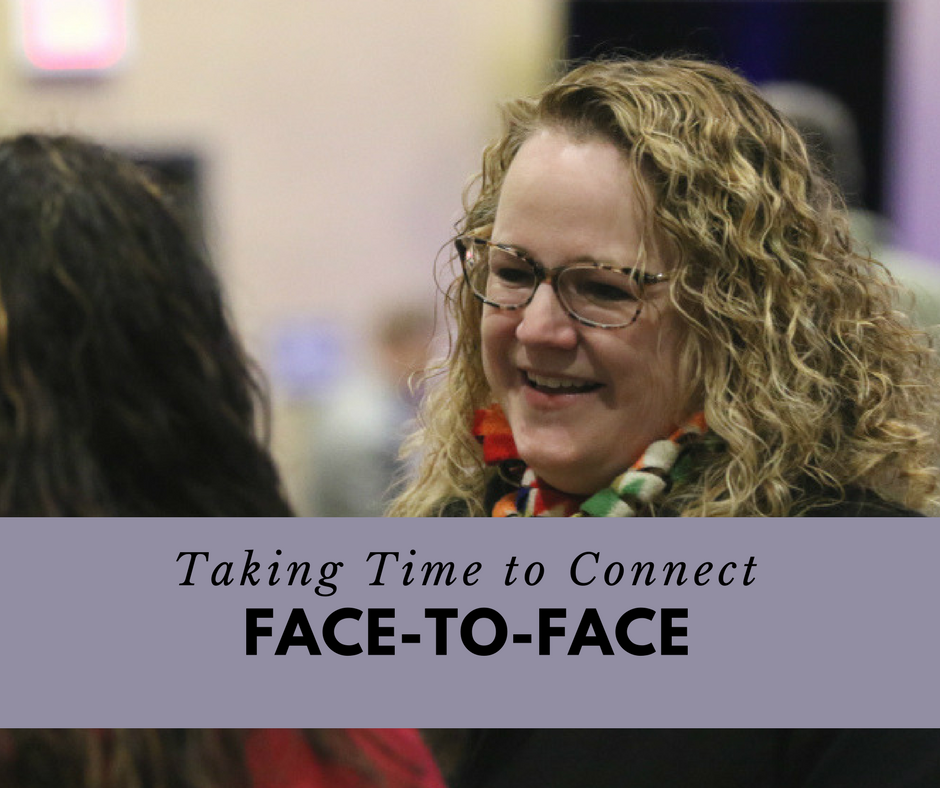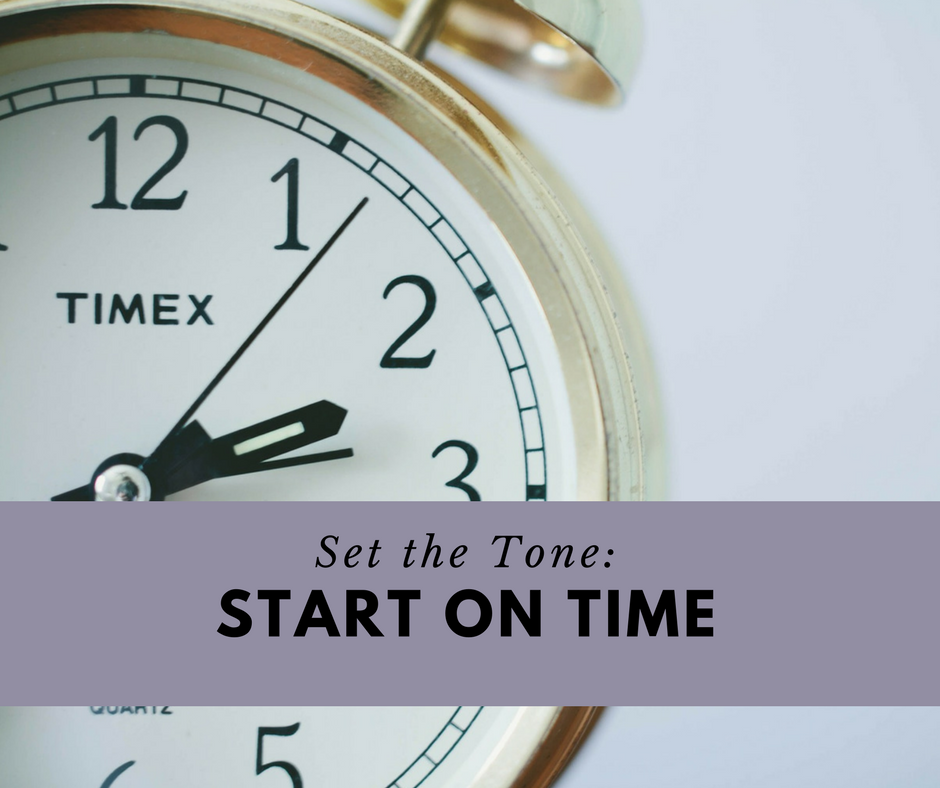|
Thanks to technology, we have many ways to communicate when members in a group don’t live in the same geographic region. Conference calls, email conversations, webinars, video conferencing, and other tools make it possible to participate in the same conversation without being in the same room.
We appreciate the ease of bringing together people who live in Bismarck and St. Paul and knowing that everyone will make it home for dinner. Touching base through Google Hangout on a snow day? Yes, please. As much as we love the efficiency of virtual conversations, however, we recognize something is missing. We believe meaningful relationships are best nurtured when we meet face-to-face. For collaborations and conflict resolution, in-person conversations are critical. Looking someone in the eye or shaking their hand is valuable in any situation. We thrive on helping our clients improve their in-person interactions, whether it’s a meeting, an event, a conference, or a gathering. Here’s why: More Communication The reality is human interaction is nuanced. People communicate more than what their words convey. In fact, only about 7 percent of what we communicate is through actual words. The way words are spoken and facial expressions provide most of the clues for what is being said. When we meet virtually, it is more difficult to read body language, sense the emotional intelligence of others, and gauge another’s engagement in the conversation or activity. Video-conferencing solves some of these challenges, but it is still possible to miss subtle gestures. Scientifically Supported We are programmed to feel closer and connected to someone who has touched us. When we meet face-to-face, we do more than gather in the same room. We shake hands, we touch a shoulder. We may even offer a hug. These brief touches contribute to our own health. Researchers have discovered that touch “strengthens friendship bonds, triggers more positive emotions, and encourages people to be more responsive to others’ needs,” according to a Psychology Today article published in 2016. Better Discussion There are heavy social pressures to participate when we’re face-to-face. In these situations, we are typically more engaged in the conversation and less apt to step away. Our posture, vocalizations, and non-verbals cue others that we’re listening (see above), and active listening is an important way we build trust with others. When trust increases, better discussion occurs. People are more willing to share and build upon each other’s ideas. As in a classroom, we learn from more than just the presenter or leader. We may learn just as much or more from the others in the room, not only when interactions are smooth and comfortable. In face-to-face interactions, questions and rapport build off each other. These moments of spark aren’t interrupted by low bandwidth, connection delays, or distance. We know that face-to-face interactions aren’t always possible. But taking the time to make them happen is always worth the effort. — Rachel P.S. Looking for a way to jump-start your next face-to-face event? Download our free Event Strategy Worksheet.
0 Comments
“Hi, Sean. It’s Tom, Tom Brokaw. Just checking in to see if I can start my newscast on time. Are you still on schedule up there in Fargo?”
During 25 years in television . . . and thousands of daily newscasts . . . I never received that phone call from Tom Brokaw. Still, every day my team started and ended its newscasts on time, right down to the second. So did Tom and his team. If there’s any enduring lesson I carry from those days, it is to be on time. Always. Truth be told, being on time means more than starting on time (never underestimate the value of ending on time), but let’s start at the beginning. It’s tempting to be flexible with start times. After all, who doesn’t feel obligated to wait for a latecomer or open to letting a crowd socialize a few more minutes. And yet, the effort it takes to be prompt pays off every single time. As project managers, we call and lead meetings because there is a project or process underway. We need everyone around the table engaged. For a meeting to have value, everyone in the room needs to feel empowered to give advice, insight, direction, feedback, criticism. As event managers, we may be in charge of the flow for the day. Whether someone’s in a meeting or at an event, they need to feel valued. By starting promptly, you immediately send a message that the gathering is worthwhile and that you value the people who are attending. By starting on time, you immediately tell everyone in the room: “You are important. Let’s not waste your time.” The single most consistent way I know to demonstrate how I value someone is to pay attention to her. When a meeting or event starts on time, you can see how a person’s body language responds. You will observe satisfied nods, eye contact, and a more energetic posture. This stands in stark contrast to the body language shown during meetings or events that don’t start on time. In these scenarios, people drift in and settle into a chair before getting up again to refill their water or coffee. As the appointed start time slides by, they look at their phones (or watches) and start to engage in something else. It’s like watching a balloon deflate. Pfffffftttttt. Flat. Uninspired. Unworthy. Starting on time is the ultimate strong opening move. It sets the tone that you are in control and have expectations. It’s a rah-rah step: “Let’s go, team! You are here because this is work or a topic we care about together.” Starting a meeting on time has the additional benefit of assuring those around you that you are a good steward of resources. After all, if you value time, more than likely you also are careful steward of financial and human resources. At Reach Partners, we often stand side-by-side with volunteers or client staff as they gather to take that next meaningful step. When people walk into a room and immediately sense direction and purpose, they engage. When they engage right away, the process is more efficient and smoother; the experience is more joyful, the final outcome better. Think about it in these terms. If your office has motion-sensitive lighting, the lights turn off when there’s no noticeable activity in the conference room. The same thing happens in a meeting. If there’s no momentum, if nothing has started, attendees shut down. Trust me, once someone in a meeting shuts down, it takes more than an arm wave in the air to get their attention again. It might even take more than doughnuts. Leave people sitting too long and they will inevitably do the thing we feared the most in television: they will tune you out . . . and it’s awfully hard to get them to tune back in. —Sean |
Reach PartnersYour partners in leadership. Categories
All
Archives
July 2024
|
|
|
Reach Partners, Inc
3330 Fiechtner Dr. Suite 100 Fargo, ND 58103-2321 701-271-8170 Copyright (C) 2024 Reach Partners Inc.
|


